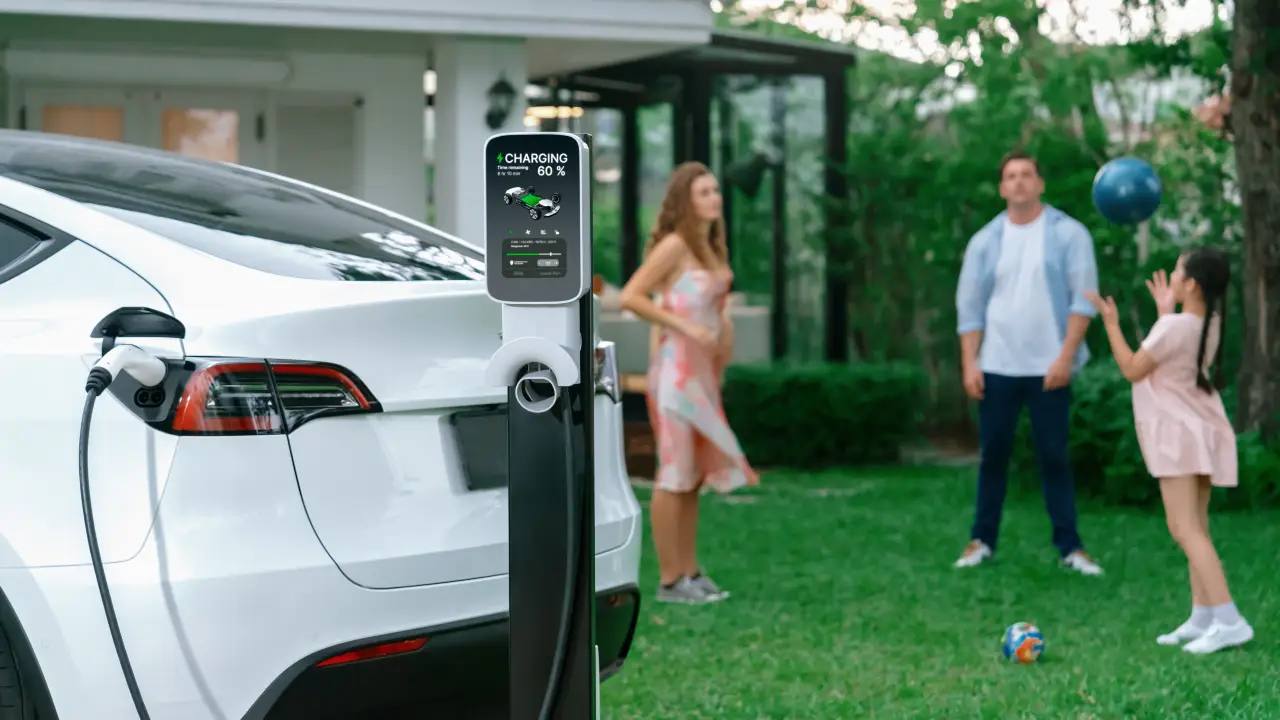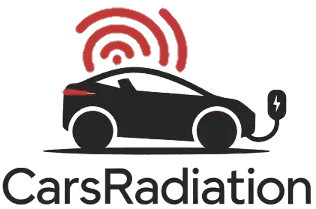BEVs and Their Electromagnetic Fields (EMFs)

Battery Electric Vehicles or BEVs are becoming a dominant mode of transportation, supported by global regulatory shifts and increasing demand for lower-emission alternatives to internal combustion engine (ICE) vehicles. These vehicles rely entirely on electric propulsion, eliminating tailpipe emissions and offering greater efficiency. Industry forecasts indicate that by 2040, over 50% of new vehicles sold will be electric (source: IEA Outlook for Electric Mobility).
BEVs expose occupants to various types of electromagnetic fields (EMFs), originating from high-power electrical components. These fields are part of the operating environment created by the vehicle’s battery system, inverters, traction motors, and communication modules.
For clarity, EMFs are divided into two broad categories:
- Ionizing radiation: Includes X-rays and gamma rays; capable of breaking molecular bonds.
- Non-ionizing radiation: Includes static magnetic fields, extremely low frequency (ELF) fields, intermediate frequency (IF) fields, and radiofrequency (RF) radiation. BEVs emit the latter group.
The main non-ionizing emissions associated with BEVs are:
- Static magnetic fields from DC currents in the battery and high-voltage bus
- ELF fields from alternating currents in inverters and motors.
- IF fields from switching devices and wireless charging.
- RF radiation from Bluetooth, GPS, Wi-Fi, and cellular modules.
Each field type is linked to specific vehicle operations. Exposure levels depend on hardware layout, driving profile, shielding quality, and charging method. Although measurements typically fall within accepted short-term safety thresholds, interest in potential long-term, low-level exposure effects continues to grow.
BEV Powertrain Architecture and EMF Sources
The BEV propulsion system consists of several subsystems that are primary sources of EMFs (sources: Altoo, JRC Policy Report, Magility)
- Battery Pack: High-capacity lithium-ion cells delivering DC power.
- Inverter: Converts DC to AC, necessary for motor function.
- Motor Unit: Converts electrical power into mechanical rotation.
- Onboard Charger and Charging Interface: Interfaces with AC and DC charging networks.
Each subsystem contributes to the electromagnetic profile:
- DC systems generate static magnetic fields.
- High-frequency switching in inverters and torque generation in motors produce ELF fields.
- Wireless charging systems and power electronics introduce IF fields.
- Integrated connectivity features emit RF radiation.
Compared to hybrid vehicles or ICEs, BEVs maintain continuous electric operation, resulting in longer and often more intense EMF exposure windows.
Types of EMF Emissions in BEVs
Static Magnetic Fields
Generated by DC current flow in the battery and high-voltage distribution bus. These fields are strongest in proximity to battery housings and motor enclosures (based from JRC Policy Report). While static, they can induce electric fields in moving conductive media, including biological tissues, due to relative motion.
ELF Magnetic Fields (Below 300 Hz)
ELF fields are associated with inverter switching, motor rotation, and regenerative braking. Exposure levels are highly dynamic, with field peaks during vehicle acceleration and braking phases. Measured cabin field intensities have reached 30 µT, particularly near the footwells of front-seat occupants (as reported by Hareuveny, R. et al. (2015)). WHO recognizes ELF fields as possibly carcinogenic (Group 2B), citing associations with childhood leukemia.
Intermediate Frequency (IF) Fields
IF fields, from several kHz up to low MHz, arise from wireless power transfer systems and high-frequency switching circuits. As wireless charging adoption increases, IF exposure in enclosed cabin environments is likely to become more significant.
Radiofrequency (RF) Radiation
RF emissions originate from antennas and wireless communication units embedded within the vehicle. Frequencies range from MHz to several GHz. Exposure depends on antenna location, shielding, and cabin materials. Improper shielding may result in increased RF levels within the passenger compartment (read more from Altoo).
EMF Hotspots Inside the Vehicle
Measurement campaigns done in both laboratory and operational settings have identified consistent hotspots:
- Driver footwell: Strong ELF fields during active acceleration.
- Rear seating zones: Increased levels above battery modules, particularly in compact models.
- Charging interfaces: IF and ELF fields rise sharply during active wireless charging.
Vehicle architecture plays an important part in exposure distribution. Studies from the BfS show that peak readings may appear in different zones depending on design choices.
Charging-Related EMF Exposure
AC Charging
AC charging induces localized ELF fields, primarily around cables and connectors. These exposures are moderate and can be minimized through proper cable geometry and shielding.
DC Fast Charging
DC fast charging introduces raised static and ELF fields. Peak readings have reached 0.2 mT (static) and 100 µT (ELF) near the charging point (based on a study made by Gryz et al. (2022)). Prolonged proximity to cables during operation is the most significant exposure vector. Passive distancing is advised.
Measurement and Monitoring of Radiation in BEVs
Magnetic field exposure inside battery electric vehicles (BEVs) is typically assessed using calibrated instruments such as triaxial magnetometers, broadband spectrum analyzers, and body-worn dosimeters. These tools allow researchers to capture the intensity and frequency characteristics of the fields generated by various subsystems within the vehicle.
Measurements are generally carried out under representative operational modes:
- Urban driving conditions: Characterized by frequent acceleration and regenerative braking. These actions cause variable current loads, leading to fluctuating levels of extremely low frequency (ELF) magnetic fields.
- Highway driving conditions: While currents are more stable, the exposure time is typically longer. Fields remain moderate but continuous.
- Charging events: These tend to produce the most concentrated magnetic fields, particularly with direct current (DC) fast chargers, where current flow is maximal near the cable and power electronics.
To support consistent evaluation and facilitate comparison across studies, the European Commission’s Joint Research Centre (JRC) has established unified test methodologies. These include defined protocols for instrumentation setup, field mapping, and passenger-position exposure recording. These procedures form the basis for emerging policy frameworks aimed at evaluating compliance with safety limits and shaping long-term exposure guidelines.
Electromagnetic Fields in BEVs: An Overlooked Variable
BEVs reduce emissions but introduce consistent exposure to static and low-frequency magnetic fields. While current measurements often meet safety limits, concerns persist about chronic exposure, particularly for pregnant occupants and children.
Solutions like better shielding and active cancellation exist, but adoption lags behind innovation. Monitoring and regulation really need to catch up.
References
- International Energy Agency (2025). Outlook for electric mobility
- World Health Organization (2007). Extremely Low Frequency Fields: Environmental Health Criteria 238
- National Cancer Institute (2022). Electromagnetic Fields and Cancer
- Bundesamt für Strahlenschutz (German Federal Office for Radiation Protection) (2009). Bestimmung der Exposition durch Magnetfelder alternativer Antriebskonzepte: Abschlussbericht zum Forschungsvorhaben
- Hareuveny, R., Sudan, M., Halgamuge, M. N., Yaffe, Y., Tzabari, Y., Namir, D., & Kheifets, L. (2015). Characterization of Extremely Low Frequency Magnetic Fields from Diesel, Gasoline and Hybrid Cars under Controlled Conditions
- European Commission Joint Research Centre (2020). Assessment of Low Frequency Magnetic Fields in Electrified Vehicles
- Gryz K, Karpowicz J, Zradziński P. (2022). Complex Electromagnetic Issues Associated with the Use of Electric Vehicles in Urban Transportation
- Altoo (2023). Can Electric Cars Be Harmful to Our Health?
- Magility (2023). Electromagnetic Fields in Cars – An Experiment

